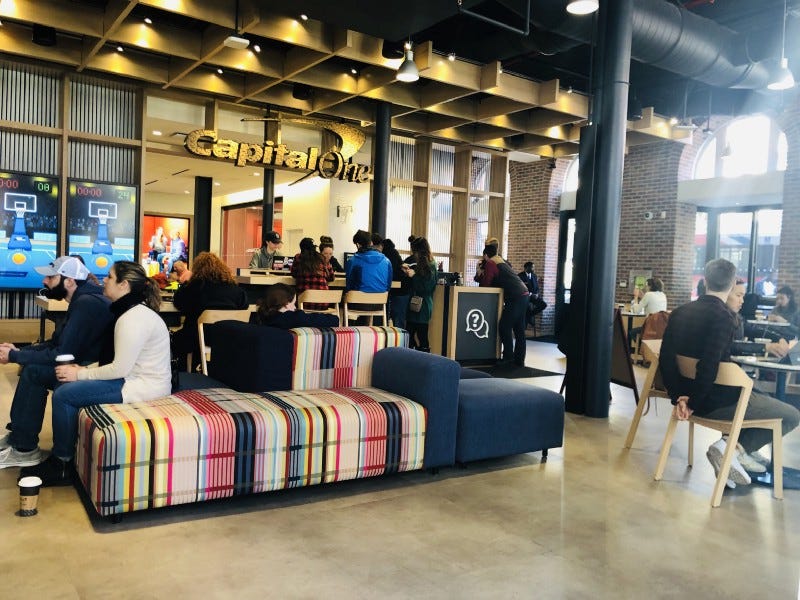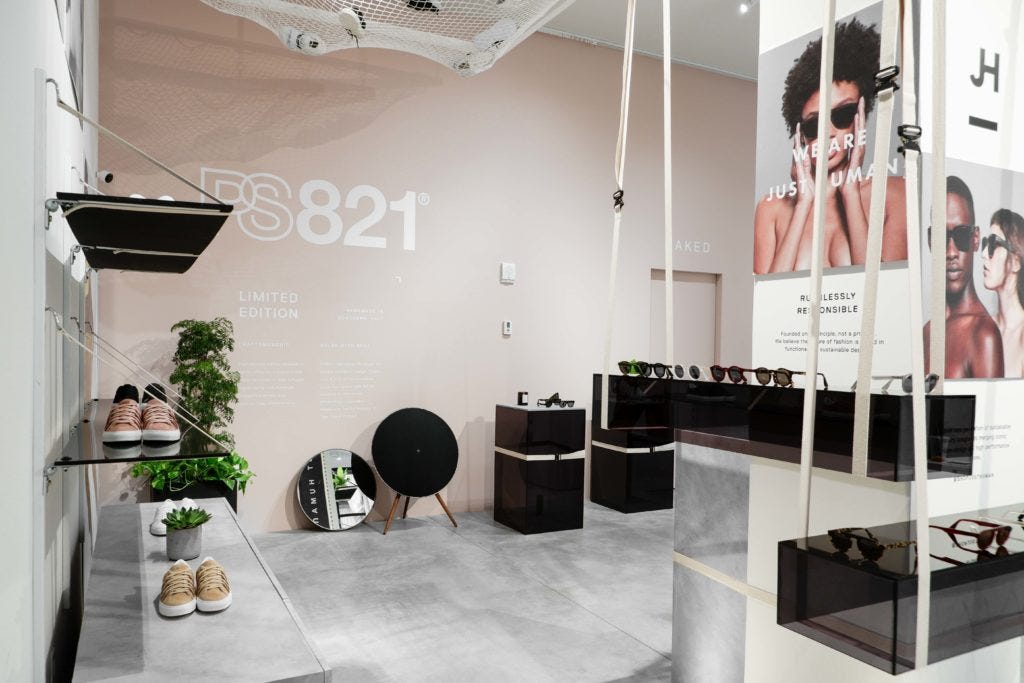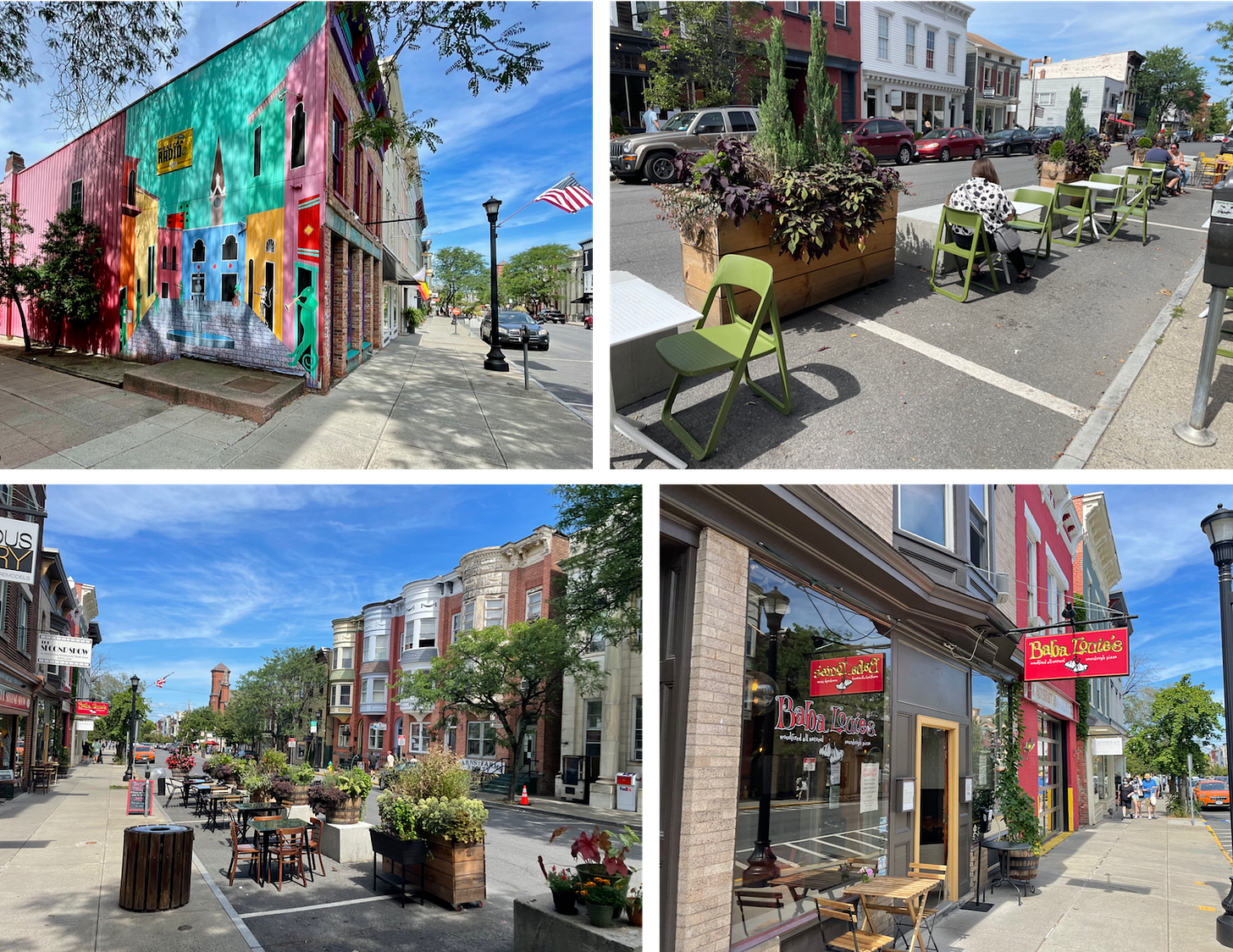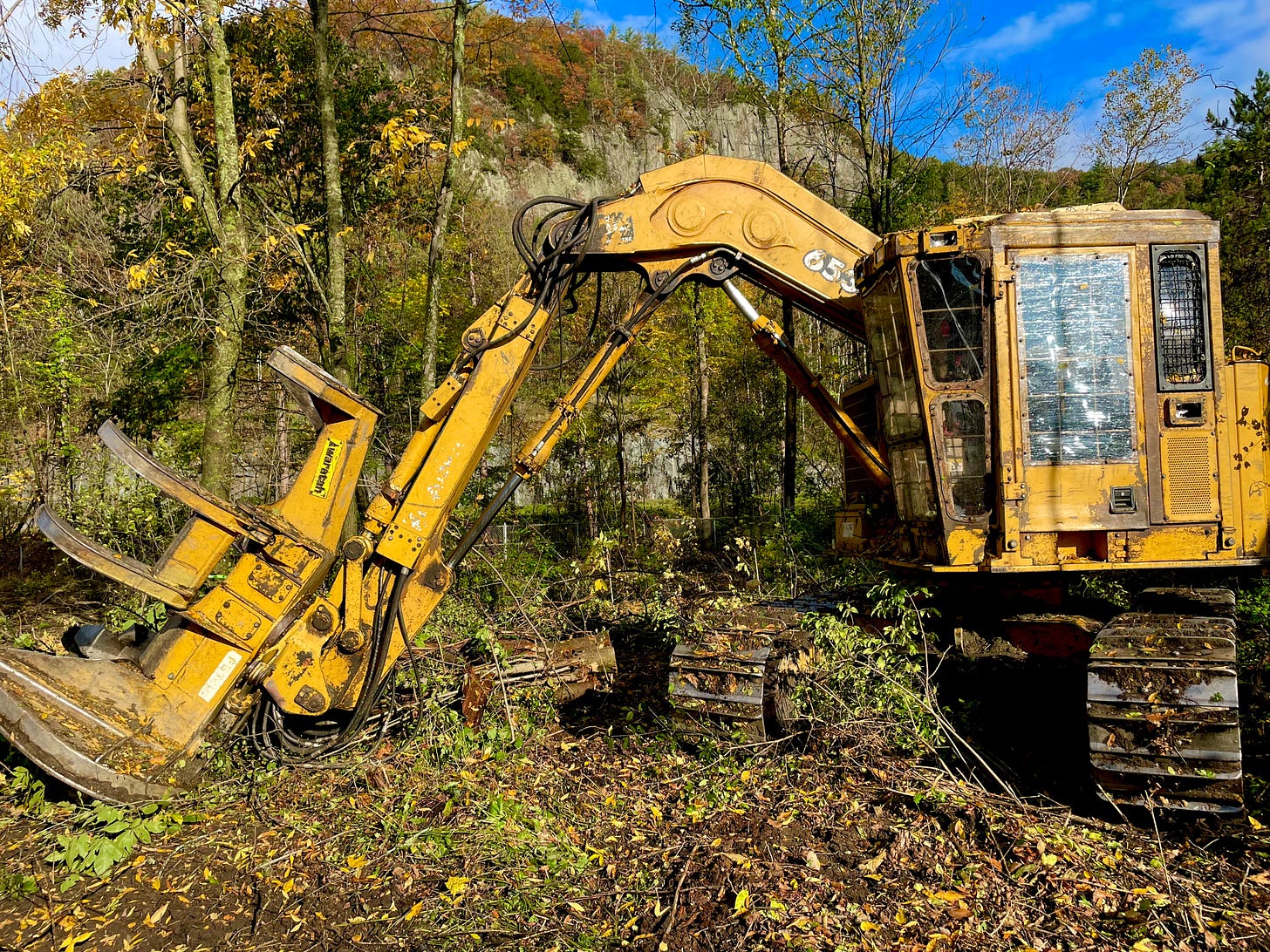3-2-1: Competing As A Small Retailer, Closing On My Newest Project, A Logging Operation, & More
Week #12
Happy Sunday —
Here are:
3 things from others,
2 things from me, and
1 picture
Related to incremental real estate development and smart growth.
Enjoy!
3 THINGS FROM OTHERS
I.
Earlier this year, I wrote an article on Dollar General and the questionable benefits it (and other big box stores) provides smaller communities.
Readers were in general agreement—there seemed to be a lot of head nodding on DG’s erosive effect on our communities. But a few readers argued that the death of local brick and mortar (not to be confused with this blog, Brick + Mortar) was inevitable. If it wasn’t by the hand of DG, then it was (or will be) Amazon, Walmart, or pick your favorite big box store.
In addition—part of the argument went—capitalism is king and the consumer should have the right to choose who they support. Artificially restricting certain businesses based on revenue, number of employees, or types of (legal) products sold goes against everything America represents itself to be.
I’ve spent a lot of time since then mulling this counter argument over. And, aside from DG’s abhorrent wage structure and choices in architectural style, I think there’s a lot of validity to it.
DG and the other cheap-plastic-crap stores are not inherently evil, they’re really only the logical byproduct of the age we live in. I mean, just look at globalization and eCommerce. Traditional brick and mortar doesn’t stand a competitive chance and it never did. Pricing of commodity goods will always be a race to the bottom which, from the perspective of most consumers, is actually a good thing.
Does that mean I like DG’s business model and support what they’re doing? Not a chance. But we’re not doing our local small businesses any favors by trying to prevent DG from coming into town. Because if it’s not them that delivers the death blow, then it’ll just be a digital retailer like Amazon. Instead, our local brick and mortar needs to adapt.
(A huge caveat here is that I still stand behind regulation of the scale and design of big box stores. An ugly, 15,000 SF vinyl box should never have a place in downtowns and village centers. Or anywhere for that matter. Why can’t they do what McDonald’s does in other parts of the world?)
It’s understood that people prefer to spend money on experiences, not things. Experiences are unique—the opposite of a commodity purchase. They are associated with identity, connection, and social behavior. Looking back on purchases made, experiences make people happier than do possessions.
Experiences don’t have to entail blowing $5k on Yacht Week or going sky diving halfway across the world in Cairns. They can be any number of smaller gestures or activities that elicit emotion or connection—getting coffee with an old friend; walking past the neighborhood bakery as the smell of fresh bread wafts out; or even admiring great architecture.
This idea of selling experiences can and should be adopted by our small businesses. Marketers have a word for this (of course)—experiential retail—and, recently, it’s been all the rage in bigger cities.
CAMP—a “family experience” store in NYC that sells toys—combines play, media and merchandise to create an enriching and fun experience for kids and grown ups.
Capital One—you know, the bank with the “what’s in your wallet?” slogan and then had 100M accounts hacked in 2019—partnered with Peet’s Coffee to open Capital One Cafe. It’s essentially a bank branch within a coffee shop (or maybe vice versa depending on which side you’re on).
Then, there’s NAKED Retail—a rotating collection of small brands—that pairs a beautiful eCommerce platform with innovative retail concepts. These guys (and gals) take the cake on experiential retail. Their branding, interior design, and element of sensory delight make a stroll through their flagship store in NYC so enjoyable that you can’t resist buying something before walking out.
I gave examples from NYC just because that is what I’m familiar with. But there are plenty of examples elsewhere, too.
Granted, the examples above all had buildout budgets that likely exceed the annual revenues of many small businesses. But the underlying thesis is still the same—big box stores and mega eCommerce platforms do not sell experiences. And the only way local brick and mortar will remain competitive long-term will be to take advantage of and capitalize on that void.
II.
I’ve talked a bit about missing middle housing previously. But, if you’ve never heard of it, think of it as multi-unit, yet house-scaled, buildings that promote neighborhood walkability—basically a catchall for everything in between single-family homes and 20+ unit apartment complexes (like the buildings above).
Missing middle housing is the antithesis of urban sprawl. In a sense, it brings us back to our roots—where community values and social interaction are prioritized. It’s what makes our neighborhoods feel more like, well, neighborhoods.
Many municipalities have started to take action and promote missing middle infill development (that is, repurposing of existing buildings or lots in denser areas). Typically, this has been reflected in more progressive zoning policy (like Portland’s move to eliminate single-family zoning).
But Norfolk, VA just one-upped everyone else.
In an effort to incentivize more missing middle housing, the city just released their Missing Middle Pattern Book. In addition to the A+ curation of examples and visuals, it offers free floor plans to developers. And this is on top of the waivers they’ve publicly stated are available to help with density, dimension, and parking restrictions.
The pattern book is definitely worth a scan. Certainly inspiration for municipal leaders and developers alike.
And if you’re still unsure as to what missing middle housing is, here’s a quick visual to help clarify (courtesy of Norfolk’s Missing Middle Pattern Book):
III.
👇 💯. Hudson, NY (population ~6,000) is another source of inspiration which I got to visit this summer. Beautiful architecture, engaging sidewalks and storefronts, and active streets.





2 THINGS FROM ME
I.
Friday was closing day for 61 N Pleasant (check out the new project spotlight). After three grueling months of lender and appraisal delays, we finally got it.
It’s funny—people always congratulate you after buying a property. But really, buying is the easy part. You make a few calls, write a check, sign some paperwork, and voilà. You now own a piece of real estate. The hard work doesn’t actually start until after closing.
Between getting town approvals, raising the money to tackle renovations, executing on the business plan, and then leasing the apartments up, I’m likely looking at solid 12 months of hustle. And, therefore, 12 months from deserving any sort of congratulations.
Several weeks ago, I wrote about repositioning the building as a co-living space. But, while I still believe there’s a place for co-living somewhere in town, it’s an extremely time-intensive business to run from an operational standpoint.
To do co-living right—with all the branding and event coordination—would require a sizable dedication of time. Time that—for me—would be better allocated building Village Ventures, the small-scale real estate development company I’ve been working on for the past year.
Instead, I’ve developed a proposal I submitted to the town Planning Commission that involves turning the unfinished barn and storage area into usable apartments. All in all, the project would yield four new long-term rental units in addition to bringing the existing three up to livable standards. We just got our hearing date set for mid-November.
Currently, the property—inside and out—is a mess. A hole in the roof, massive tree overgrowth around the building, lack of insulation, prior tenants’ belongings everywhere (including a baby grand piano!), and the list goes on. Stay tuned for some pics worthy of an America’s Worst Homes episode. At the end of the day, though, I suppose that’s what made the $150,000 sale price possible.
II.
This past week, my neighbors and I hired a logging crew to clear the two acres of wooded area behind 501 Main.
Although our motives are different, we realized that we were all looking to log at the same time. For 501 Main, I need to make way for the 21 required parking spaces mandated by town zoning bylaws for my project. Whereas my neighbors are exploring long-term development options on their side. It was an easy decision to combine efforts and share costs.
As of writing this, the loggers are about halfway through the project. But, it didn’t take long to recognize how tight of an operation they run.
They’ve got four guys working four pieces of heavy machinery, all operating at an efficiency that would send any Six Sigma Blackbelt directly to nirvana.
Briefly, their process goes something like this.
The monstrosity above cruises around, bear hugging trees and chopping them clean at the base. It then lowers them safely to the ground. A second “runner” (below) collects and transports the felled trees from where they were first cut over to the crane and chipper.
The crane then picks up the trees and directs them into the chipper. The wood chips are expelled out into a big box truck to then be transported off site.
But the best part? Next to the crane, there’s a 4-foot-wide saw blade that cuts the big boys in half before being sent into the wood chipper.
Seems like the kind of place Tony Soprano would’ve had a field day at. Although I, too, had a bit of a field day—ogling all the equipment that, as a kid, used to just be the stuff of Tonka Trucks and dreams.
Here are some pictures taken halfway through the process. We had gone through in advance and marked several trees to save. More to come next week.
1 PICTURE
I.
This—I just learned—is called a bioswale. They’re designed to capture, treat, and infiltrate stormwater runoff in a both environmentally-friendly and elegant way. Would love to see these installed more frequently.
📍 San Francisco, California
From: @zachklein
That’s it for today. Thanks for reading. If you haven’t yet, go ahead and subscribe here:
About me: I’m Jonah Richard, a small-scale real estate developer in Vermont. With my company, Village Ventures, I’m currently getting my hands dirty redeveloping mixed-use buildings along Main Street while trying to pick apart and replicate what makes other communities thrive.
Follow me on Twitter for more things related to incremental real estate development, smart growth, and creating great places.















